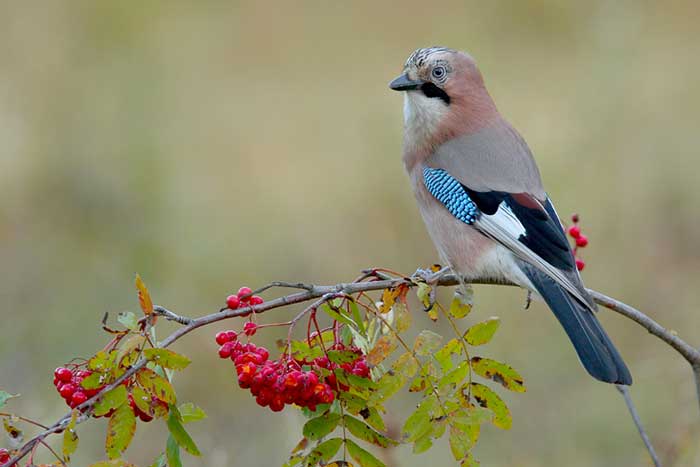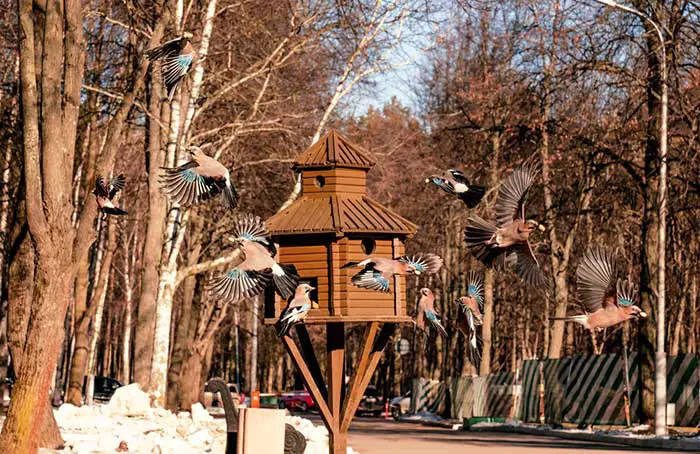Jays are shy birds that are happiest when hidden deep inside the woodland. They will make urban parkland their home, but only if it has plenty of matures growth in which they can cover.

Jays are so timid that you might be forgiven for thinking that you had never spotted one. Like me, have you wondered if jays migrate, which would at least explain their absence for part of the year?
Jays are common across most of the UK, apart from northern Scotland. They are resident birds that hold 170,000 territories. Their numbers bolster during the winter when continental jays arrive in search of food supplies and a warmer climate.
Table of Contents
Immigrant jays
Birds that migrate do so in autumn, before the temperature drops and conditions become too difficult to survive. Winter also makes natural food sources scarce.
In the UK, jays cope well with the elements, mostly because they spend the autumn months stocking up on acorns. They bury them in marked hiding places and retrieve them when the weather changes and seeds and insects are in less abundance.
Continental jays prefer the milder winter in Britain and take advantage of the plentiful food supplies. Although they are shy if they spot a well-stocked food table, temptation leads them to be bold and break cover.
They arrive in autumn, usually flying in via the east coast.
Scandinavian and Polish jays dart to bird tables, but only when they know the coast is clear. They make a beeline for peanuts, mealworms, and nyjer seed, but just as the British birds have, they have huge appetites and will sample most scraps.

Jay irruptions
An irruption of birds is a group that travels short distances in small numbers to places where food sources are most abundant.
Occasionally, it might be a large group of birds that head southwards, covering greater mileage.
Continental jays arrive in Britain in small irruptions; if acorn crops fail in their native land, they ascend in much larger numbers.
Do British jays ever migrate?
Jays adore acorns and travel for miles around to find a supply should their local source runs dry.
They are noisy birds that screech as they fly, attracting unwanted attention.
People who have heard this noise and looked skyward to see a small flock of jays might mistakenly think they’re migrating – especially as it most likely happens in autumn.
It is just a coincidence; the birds are all looking for oak trees so that they can harvest as many acorns as possible before winter.
Jays are natural acorn planters; their caches are important for the distribution and survival of several oak species.
Final thoughts
Thanks for taking the time to read ‘Do Jays Migrate’.
British jays are sedentary and remain close to their territory year-round unless hunting for acorns in autumn.
It would be a soul-destroying, monumental waste of time for the birds if they spent months hoarding their stock of acorns, only to migrate to warmer climes before they had the chance to eat any.
Left to germinate, those tiny acorns would grow into might oaks covering acres and acres of our woodlands.

Saw several jays flying past today which made us wonder if they were migrating. Thanks for the info, like your site!